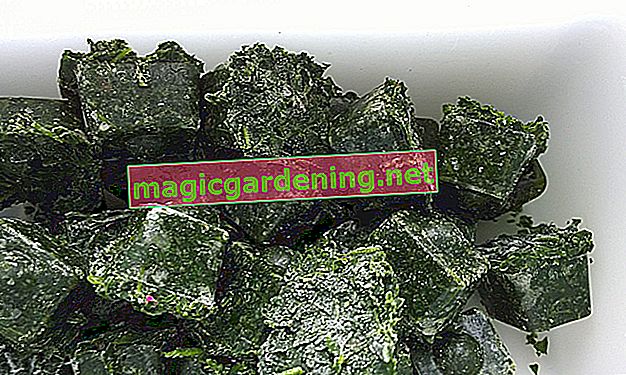
Designations
The ragwort is popularly also under the name
- Ragwort
- Spider weed
- Toad weed
- Edible herb
also read
- Poison of the ragwort in honey too?
- How should ragwort be disposed of?
- The ragwort - highly toxic for horses!
known. The plant is named ragwort because of the white seed heads, which, similar to the dandelion, serve to spread the seeds. They show up already during the flowering period. The Latin name of the plant Senecio also means old man.
Identifying features
The ragwort catches the eye with its bright yellow flower heads on fallow land. In meadows and pastures, however, the poisonous plant can often only be recognized at second glance, as many plants that bloom in June also have yellow flowers.
size
Depending on the location, the plant can reach a size between 30 and 100 centimeters. Under favorable conditions, it can even grow up to 120 centimeters. In the first year, only the base rosette with about 20 centimeters long leaves appears. Their appearance is similar to that of kale. It is only from the second year onwards that the ragwort grows into small bushes.
Stems and leaves
The ragwort forms an angular, twisted and strong stem, which often shimmers reddish-brown or purple and is partly hairy like a cobweb.
The pinnate (term for a leaf that consists of several leaves) are strongly dissected and arranged alternately. They are relatively fibrous and often covered with a cobweb-like fluff on the underside. The side lobes are at right angles. When the plant is in full bloom, the basal leaves have already wilted.
The ragwort not in flower can be identified relatively clearly by the smell of the grated leaves. They have a very unpleasant, almost nauseating odor.
blossoms
The bright yellow, 15 to 20 millimeter large flower heads of the daisy family stand in upright corymbs. They are similar in structure to daisy flowers. There are 13 ray-flowers around the inner, disc-shaped wreath. However, as with all composites, the number of these can vary.
The bud cover consists of 13 cover leaves with black tips and two closely fitting outer cover leaves.
Heyday
The ragwort blooms from June to August.
root
The ragwort forms a strong and deep taproot with numerous fine fiber roots.
Occurrence
The ragwort thrives at altitudes of around 1000 meters. It prefers rather dry, moderately nutrient-rich, loamy clay soils. It prefers to settle on rarely mowed agricultural areas, on road, road and railway embankments and on fallow land.
Specialty
In spring, the Jacob's ragwort is often populated by the black and yellow caterpillars of the Jacob's cabbage bear. Specializing in the host plant, the caterpillars are not harmed by the ingested toxins, but are themselves inedible for other animals. The plant can be reliably identified on the basis of the occurrence of these caterpillars.
The ragwort is one of the dangerous poisonous plants
All parts of the plant contain the toxins Jacobin and Senecionin. Young plants and flowers contain the highest concentration of poison. The toxins also remain effective in hay and silage.
The poison of the scallop is metabolized in the liver and is not directly toxic. The alkaloids also find their way into food via the food chain. These have already been detected in eggs, milk, honey and chamomile tea.
Dangerous for humans and animals
Although the ragwort is not on the list of poisonous plants, it is very dangerous for animals and people. Horses and cattle are very susceptible and die within a few days of acute poisoning. They refuse to feed, lose weight rapidly and develop bloody diarrhea. Other symptoms of poisoning are obvious lethargy alternating with sudden nervousness. Sheep, pigs and other mammals are not as sensitive to the toxins, but can also perish if fed regularly with contaminated hay.
Control on pastures necessary
Since the ragwort is avoided by animals, it can spread very quickly under favorable conditions. It is therefore recommended to control the plant immediately and in a targeted manner on pastures. It is important to ensure that the ragwort does not bloom, because the small seed umbrellas spread for kilometers and remain viable for years to come. Ragwort can be combated both biologically and chemically.
Tips
Animals have good instincts and often do not eat poisonous plants. In addition, the fresh ragwort tastes very bitter. However, dry parts of the plant in the hay are extremely dangerous, as the animals cannot isolate the poisonous plant here. Poisoning can be gradual and inevitably leads to the death of the animal.








